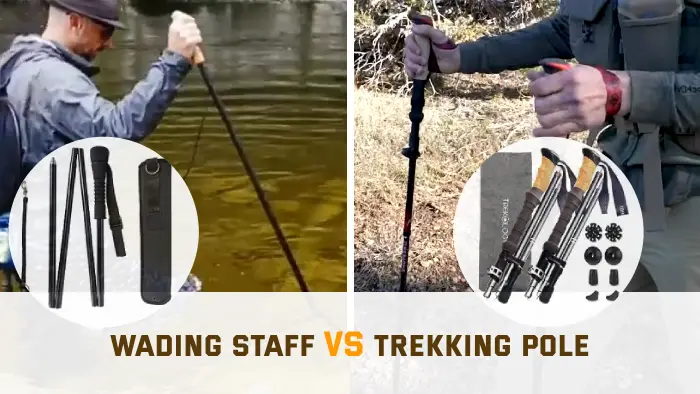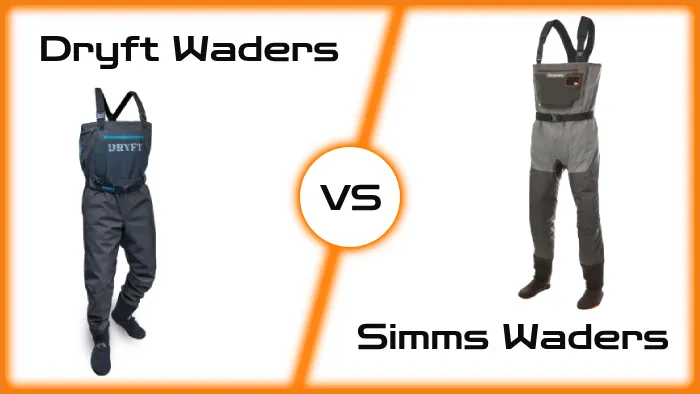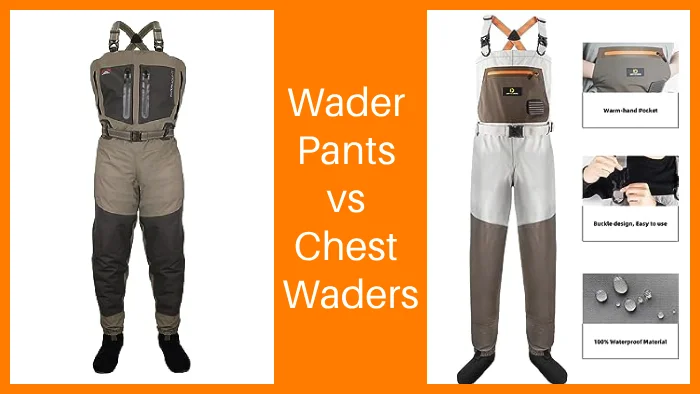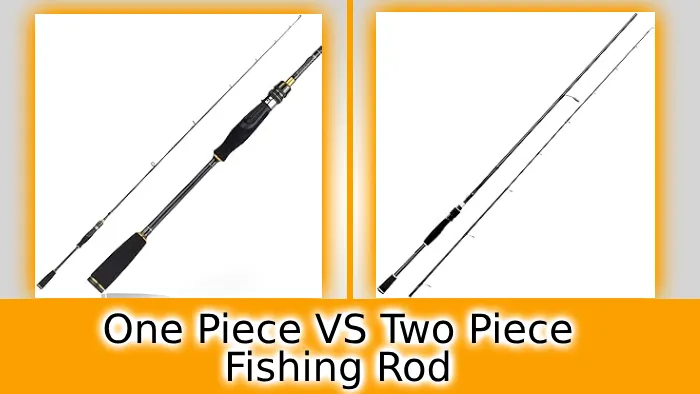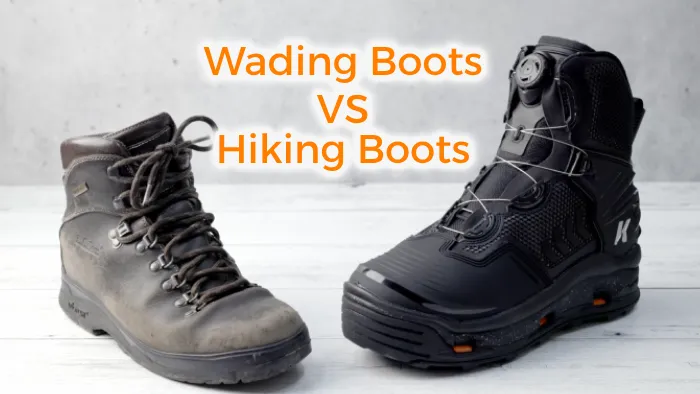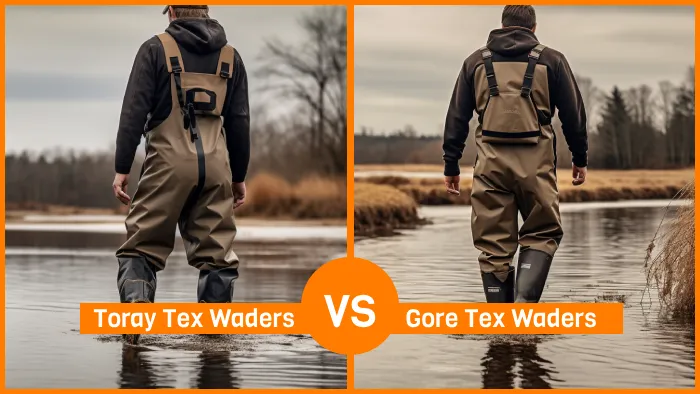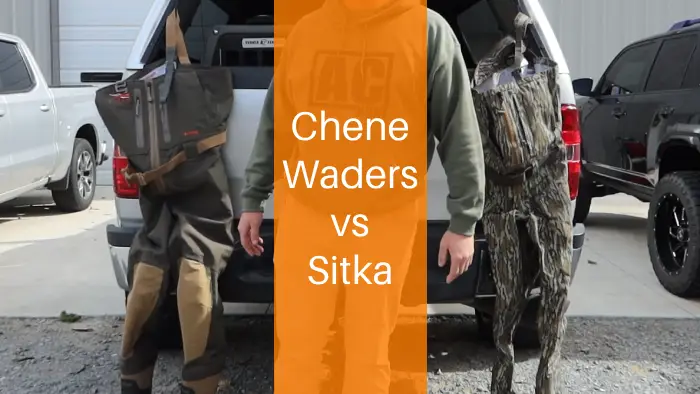Wading Staff vs Trekking Pole: 9 Differences for Fly Fishing
Wading staff and trekking poles are two essential companions that can make all the difference in your fly fishing adventures.
As you gear up for your next expedition, the choice between these two tools could greatly impact your experience.
Regarding purpose and design, the wading staff stands out as a specialized tool crafted explicitly for fly fishing and wading.
In contrast, the trekking pole, initially intended for hiking, can be repurposed to provide stability on uneven ground and even aid in wading.
Wading staffs are typically longer and have pointed tips that dig into riverbeds. In contrast, trekking poles have rounded tips.
Aside from that, there are differences in other aspects as well. We will discuss all the differences between wading staff and trekking poles so that you may determine which is best for you.
Wading Staff vs Trekking Pole: 9 Differences
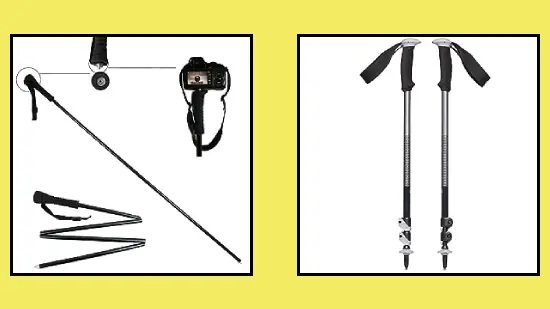
When comparing a wading staff and a trekking pole for fly fishing, they differ in a number of categories. The following are among them:
- Purpose and design
- Length and size
- Portability and storage
- Pointed tips and stability
- Wrist straps and shock absorption
- Adjustability
- Weight
- Cost
- Top shape
Let’s examine the differences between a wading staff and a trekking pole in more detail.
1. Purpose and Design
The wading staff and trekking poles have different designs and purposes. A wading staff is specifically designed for fly fishing and wading.
It offers support and stability while crossing rivers, navigating slippery riverbanks, and hiking trails. The wading staff is collapsible and can be assembled on demand, making it easy to carry and convenient to use.
On the other hand, the trekking pole was originally designed for hiking but can also be repurposed for fly fishing. It provides stability on uneven terrain and can assist in wading.
2. Length and Size
The wading staff is typically longer than the trekking pole in terms of length and size. It provides support and balance while wading deep waters during fly fishing.
Conversely, the trekking pole is generally shorter as it is not primarily intended for wading in deep waters. The shorter length of the trekking pole provides better maneuverability and control while trekking but may not be ideal for wading through deep waters like the wading staff.
3. Portability and Storage
Compared to the trekking pole, the wading staff can be more easily folded up for convenient storage and transport. While both tools can collapse to some extent, the wading staff offers a more compact design that can easily fit into a backpack or fishing gear bag.
This makes it ideal for fly fishermen who are constantly on the move and need their equipment to be easily accessible.
The wading staff’s portability and storage advantages are evident in the following ways:
- Compact size: The wading staff can be folded up into a small, manageable size, allowing for easy storage in tight spaces.
- Lightweight: The wading staff is typically made from lightweight materials, further enhancing its portability.
- Quick assembly: Unlike trekking poles, which may require more time and effort to collapse or extend, the wading staff can be quickly assembled and disassembled, making it a convenient choice for fly fishing trips.
4. Pointed Tips and Stability
The wading staff features pointed metal tips that provide stability on slippery rocks and uneven terrain. When fly fishing in rivers, it is crucial to have a secure footing to prevent accidents and maintain balance.
The pointed tips of the wading staff are specifically designed to grip well in riverbeds, ensuring that you can confidently navigate through the water.
In contrast, trekking pole tips are often rounded, which may not offer the same level of stability when wading.
The pointed tips of the wading staff dig into the riverbed, giving you a firm anchor and reducing the risk of slipping. This stability allows you to focus on your fishing technique and enjoy your time in the water without worrying about your footing.
5. Wrist Straps and Shock Absorption
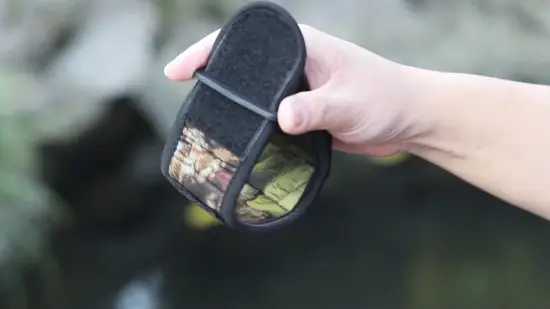
Wading staffs and trekking poles both offer wrist straps, but their functionality differs. While some wading staff models may have wrist straps, they generally do not provide shock absorption.
On the other hand, trekking poles usually come with wrist straps, which offer added stability during your fly-fishing adventures.
Also, certain trekking poles are equipped with built-in shock absorbers, which can help lessen the strain on your joints as you navigate through the water.
6. Adjustability
Now let’s talk about the adjustability of wading staffs and trekking poles. Wading staffs are often not adjustable in height, which means you need to choose one that fits you perfectly carefully. This is crucial because an ill-fitting wading staff may not provide the necessary support and stability you need while fly fishing in the water.
Meanwhile, trekking poles offer the advantage of being adjustable in length. This feature allows you to customize the pole to suit different terrains and your own height. Whether you’re wading through shallow streams or navigating steep slopes, adjusting the length of your trekking pole can greatly enhance your comfort and stability.
7. Weight
In comparison to trekking poles, wading staffs are usually lighter and more effective for use in water since they are designed specifically for use in water.
In contrast, trekking poles are lightweight but may not be optimized for wading conditions, making them feel less stable when submerged.
8. Cost
If you’re on a budget, you’ll find that trekking poles are generally more affordable. While wading staff’s prices vary, dedicated ones designed specifically for fly fishing may be more expensive due to their specific features.
On the other hand, trekking poles have broader use in outdoor activities, making them more readily available and competitively priced.
9. Top Shape
The top shape of wading staff is flattened or slightly tapered, as opposed to the top shape of trekking poles, which is curved. This difference in design is important when considering the specific needs of fly fishing.
A wading staff’s flattened or tapered top shape provides a stable platform for balancing and maneuvering in the water. It allows you to maintain your footing and navigate through slippery rocks and currents.
On the other hand, the curved top shape of a trekking pole is better suited for hiking and walking on uneven terrain. It provides support and stability on the ground.
When it comes to fly fishing, the shape of the top of your pole can greatly affect your performance and safety.
What is the ideal height for a wading staff?
The ideal height for a wading staff depends on the user’s own height and the specific intended use. For individuals over 6 feet tall, a wading staff of around 59 inches is a good fit, offering adequate support and stability in various water conditions.
On the other hand, individuals who are around 4 or 5 feet tall would find a wading staff of approximately 41 inches to be an optimal choice.
Proper sizing ensures that the wading staff offers the right assistance and balance while wading through streams or rivers, contributing to a safer and more comfortable fishing or outdoor experience.
What types of trekking pole tips are recommended for fly fishing?
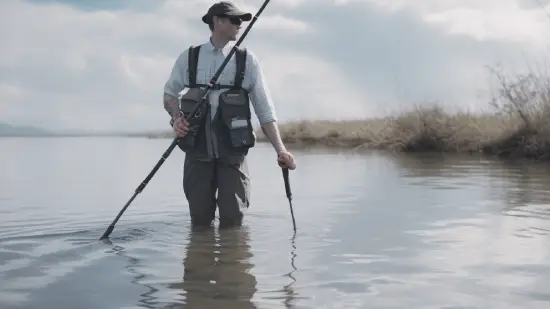
Rubber or rubberized trekking pole tips are highly recommended for fly fishing. These tips provide excellent grip and traction on wet rocks and uneven riverbeds, making them the perfect option for anglers to maintain stability while navigating rocky terrain.
Also, rubber tips limit water disturbance, minimizing fish spooking. When selecting trekking pole tips for fly fishing, rubber is the way to go.
Its superior grip and minimal water disturbance make it an ideal choice for anglers of all levels. To keep you away from people while fly fishing, invest in high-quality rubberized tips for your trekking poles.
Get the Right Support for Fly Fishing
Whether you’re a seasoned fly fishing enthusiast or a novice, the choice between a wading staff and trekking poles is pivotal.
Each tool has its own distinct advantages and considerations. The wading staff, tailored for the demands of fly fishing, offers specialized stability with its pointed tips, portability, and quick assembly.
In contrast, the versatile trekking pole can be repurposed, providing adjustable support on various terrains.
Ultimately, your decision should align with your priorities: optimal stability in the water or adaptability on both land and water. Make your selection wisely, and set forth on your fly fishing journey with confidence.

